Affiliate links on Android Authority may earn us a commission. Learn more.
Motorola Razr hands-on: Back in black
Published onNovember 13, 2019
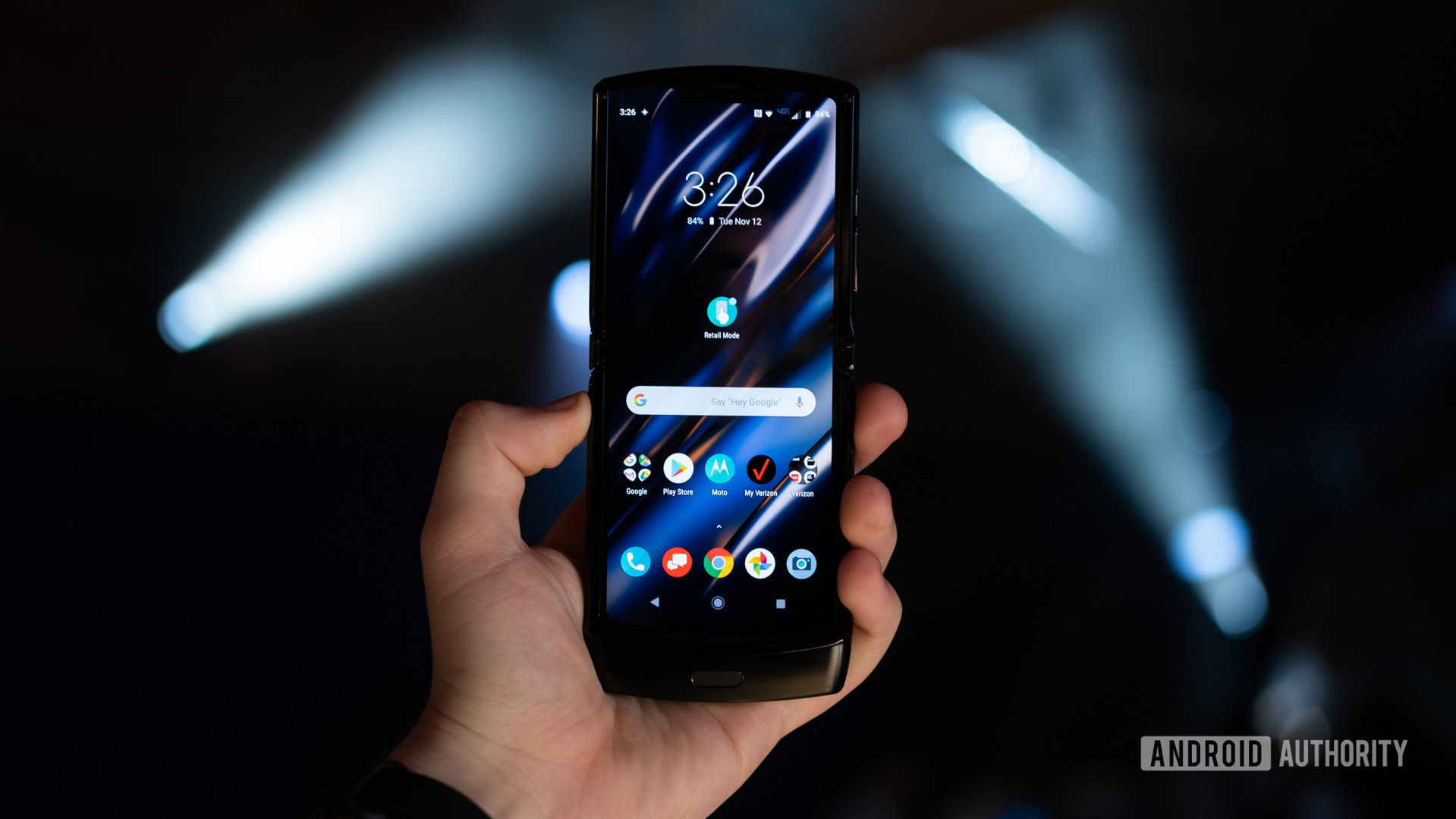
When you think about foldable phones, you probably picture a certain form factor. You probably think of something that starts normal-sized and folds out to be a lot bigger. While that’s exactly what most companies are doing, Motorola is taking foldables in a completely different direction. It’s taking them back to 2004.
This is the Motorola Razr. And no, it’s not that Razr, though you’d be forgiven for mistaking it at first glance. This is the new foldable Razr with a 6.2-inch 21:9 display tucked inside that slim body that’s become iconic over the years. It’s a full-fledged smartphone, even if it looks like a flip phone from the past.
Something that’s worth getting out of the way from the beginning, this is not a powerhouse device. The Galaxy Fold might be a phone that’s trying to replace your phone and tablet, but Motorola isn’t targeting that market at all. Instead, Moto is trying to shrink your phone to something smaller, and that requires less heat and less power consumption. This phone is nearly the same thickness as the original Razr, so If you’re looking for a specced out beast of a phone, this isn’t it.
See also: The full list of Motorola Razr specs
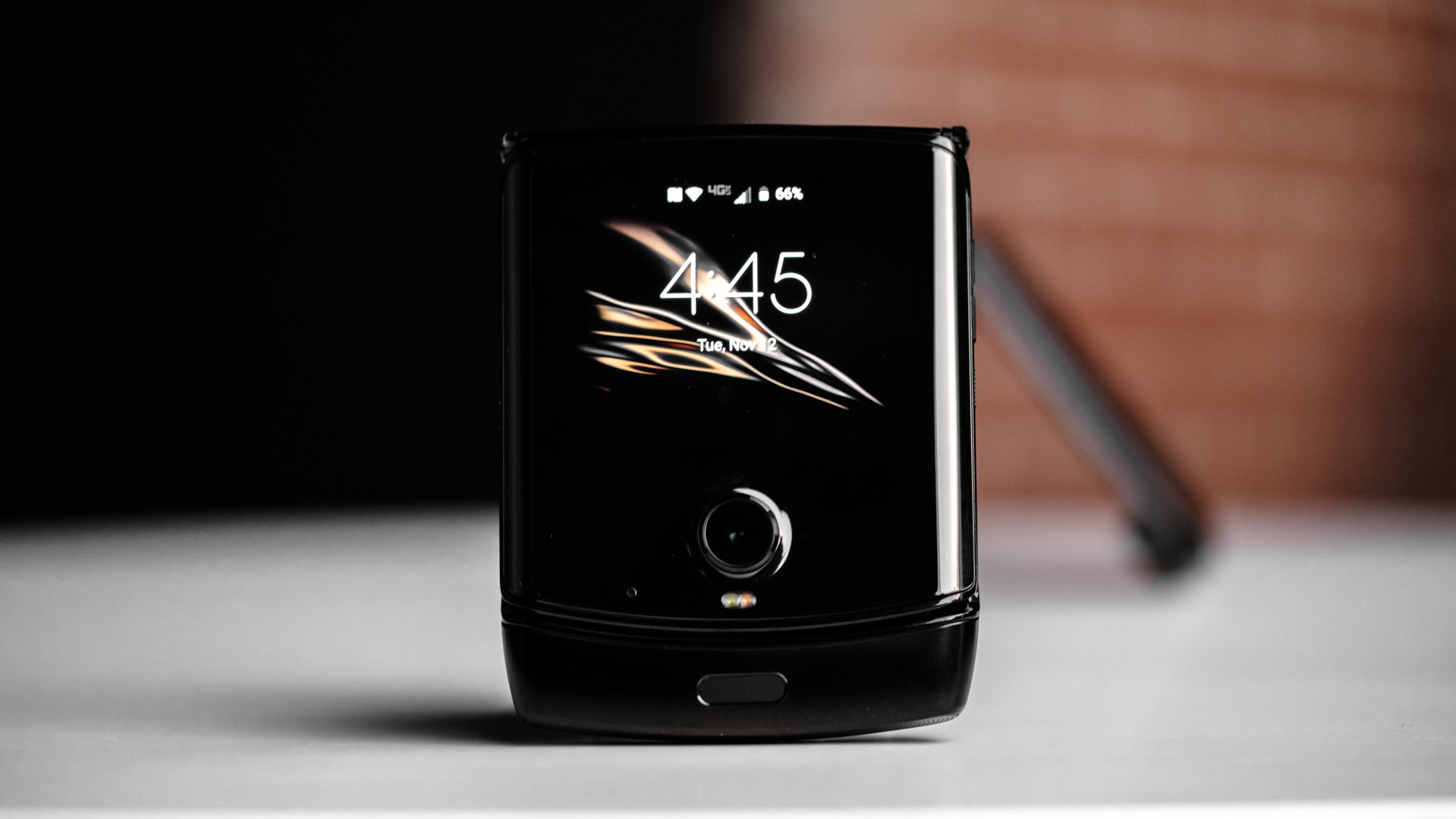
When folded, the Razr feels extremely compact. It’s actually almost the same thickness as the original Razr at just 14mm versus 13.9mm on the 2004 version. When you unfold the phone, the body comes in at a slim 6.9mm. That is way thinner than most phones you’ll find today. For contrast, the Pixel 4 is 8.2mm thick.
The Razr is nearly the same thickness as the 2004 Razr. That's impressive.
Motorola has constructed a special hinge mechanism to make the phone fold completely flat. When you close the phone, the display will slide slightly into the chin, and two plates in the phone will flex to allow for a minor teardrop fold at the top of the phone. When opened, the display stretches back out, and the plate flattens to add rigidity to the device. It’s a pretty smart concept, and Motorola says it has tested this mechanism thousands of times to make sure the phone doesn’t break.
The body of the Razr feels a bit plasticky and soft. While the front is made of glass, the back is made of polycarbonate. I personally don’t see anything wrong with this, as it’s less likely to break when dropped. This is an expensive device, however, so if you’re looking for luxury that’s not what you’ll get in this device.
Motorola has re-tooled the front display from the original Razr to be a fully functioning 4:3 touchscreen. This isn’t going to be useful for things like texting, but Motorola wants you to use this for selfies, skipping songs, and glancing at messages and notifications. You can use Google Assistant on this device, so you could always reply with your voice if you don’t want to unfold the phone.
Speaking of selfies, they’re taken with the main camera while the phone is closed since it becomes the rear camera when flipped out. This camera is 16MP and has an f/1.7 aperture. If you would rather take a selfie with the phone flipped open, there is a 5MP camera on the inside of the phone, with an aperture of f/2.2. Motorola would prefer you used the higher resolution camera though, and the inner camera is primarily used for face unlock. It’s also hidden in a notch. I would have preferred a single camera on the outside, but Motorola wanted to give users a choice during photo shoots.
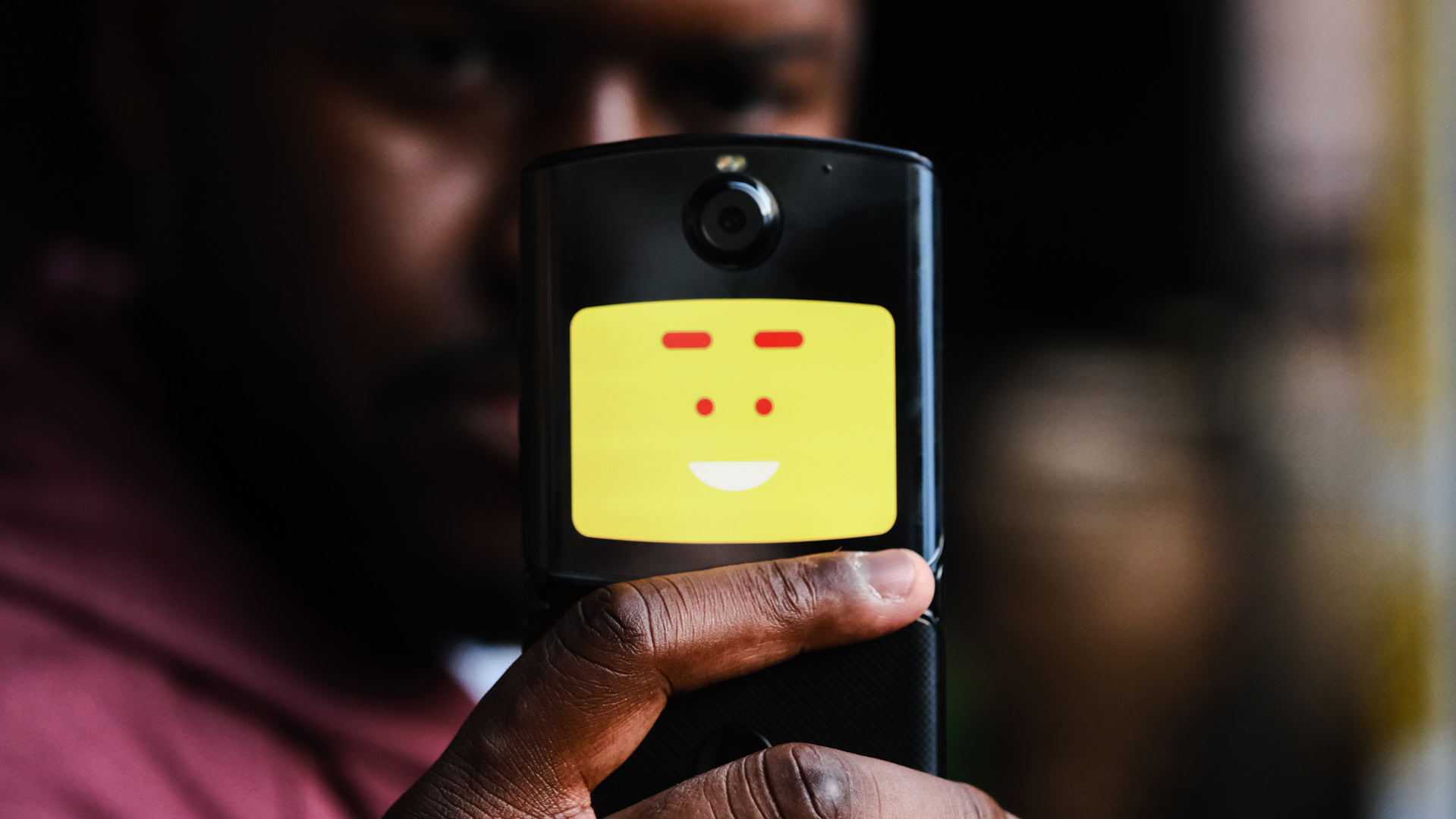
When you’re taking a photo with the phone unfolded, the it’ll display some cute smile animations on the front screen. This is a nice touch and a good way to use that extra space, though I wish Motorola displayed the camera’s viewfinder on the back instead. This would be a great way to help people see themselves when getting their photo taken.
If you don’t want to use face unlock, Motorola has added a fingerprint reader to the bulky chin of the phone. This is a nice choice because Motorola needed to have that chin if it wanted to maintain the classic Razr style. Moto also added huge speakers to the bottom of this chin alongside a 15W-capable USB-C port. Again, it feels like the company put a lot of thought into re-making the original Razr in the modern age. There is no headphone jack, but the company will include a USB-C adapter in the box.
The Razr unfolds upwards, versus the x-axis folding mechanism we’ve seen on devices like the Samsung Galaxy Fold. Unfold the device, and you’ll find a 6.2-inch 21:9 display with a resolution of 2,142 x 876. This is a pretty wonky aspect ratio and it’s not the highest resolution on the market, but the phone looked perfectly sharp during my time with it. Motorola wouldn’t disclose the manufacturer of its pOLED display, but the display seemed quite bright and vibrant.
This phone folds up, like an old-school flip phone.
If you’re a fan of Moto actions, those are all present here. You can chop the phone to turn on the flashlight or twist the phone to quickly launch the camera. These are all features that debuted in the original Moto X, and it’s nice that Motorola has carried those features over to the Razr.
Annoyingly, the Motorola Razr is running Android 9 Pie. Phones that launch this long after a new version of Android is out should not launch with older versions of Android. Motorola also did not promise a certain amount of Android updates with the device, which doesn’t inspire a lot of confidence. We’ll try to find out when it plans on issuing an Android 10 update.
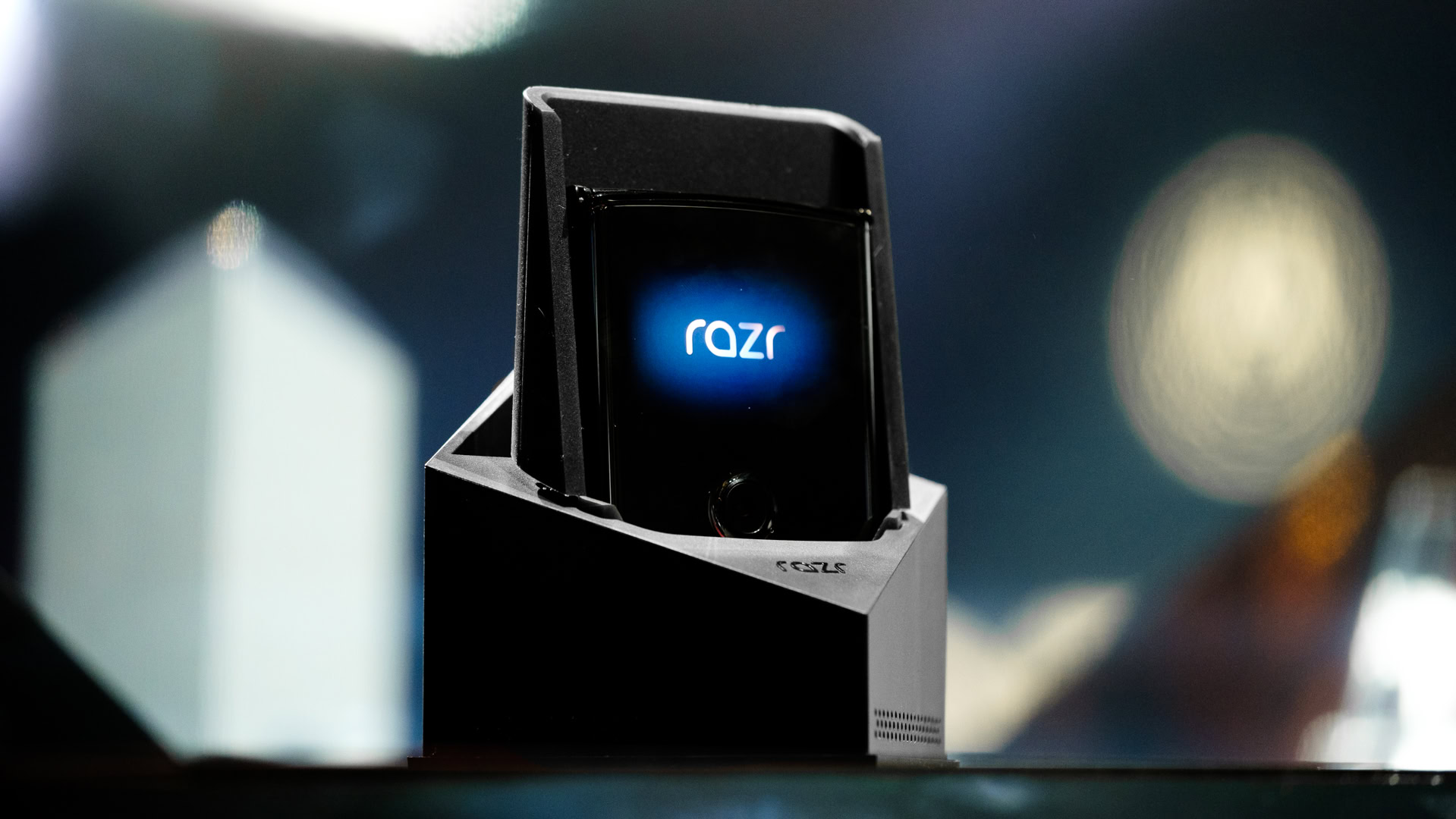
An uncommon thing to note is the functionality of the packaging. While most phone boxes get thrown away, Motorola wants you to use its box as a sound amplifier. When you take the top off the box you’re greeted with the phone in a special cradle, with a sound chamber in the bottom. Because the phone has speakers on the bottom, it blasts sound into the sound chamber which is then amplified out of the holes on the side. You’ve probably seen similar concepts before, and they were popular when smartphones were first popularized.
Unfortunately, this phone does not come cheap. There is only one variant, and it will cost $1,499.99. It’ll be exclusive to Verizon at launch, which will be selling it with a payment plan option of $62.49 per month.
This is a very steep price to pay for a phone, especially when it has decidedly mid-range specs. Motorola isn’t attempting to compete with the Galaxy Fold or HUAWEI Mate X, though, and is betting on nostalgia and practicality instead of brawn. I asked Motorola why it used the Snapdragon 710 instead of a more high-end processor, and it said it needed to balance performance with battery savings and heat. The phone is much thinner than most, and as such only has a 2,510mAh battery. A flagship processor would drain that battery extremely quickly. Motorola thinks the 710 strikes a balance between performance and battery life.
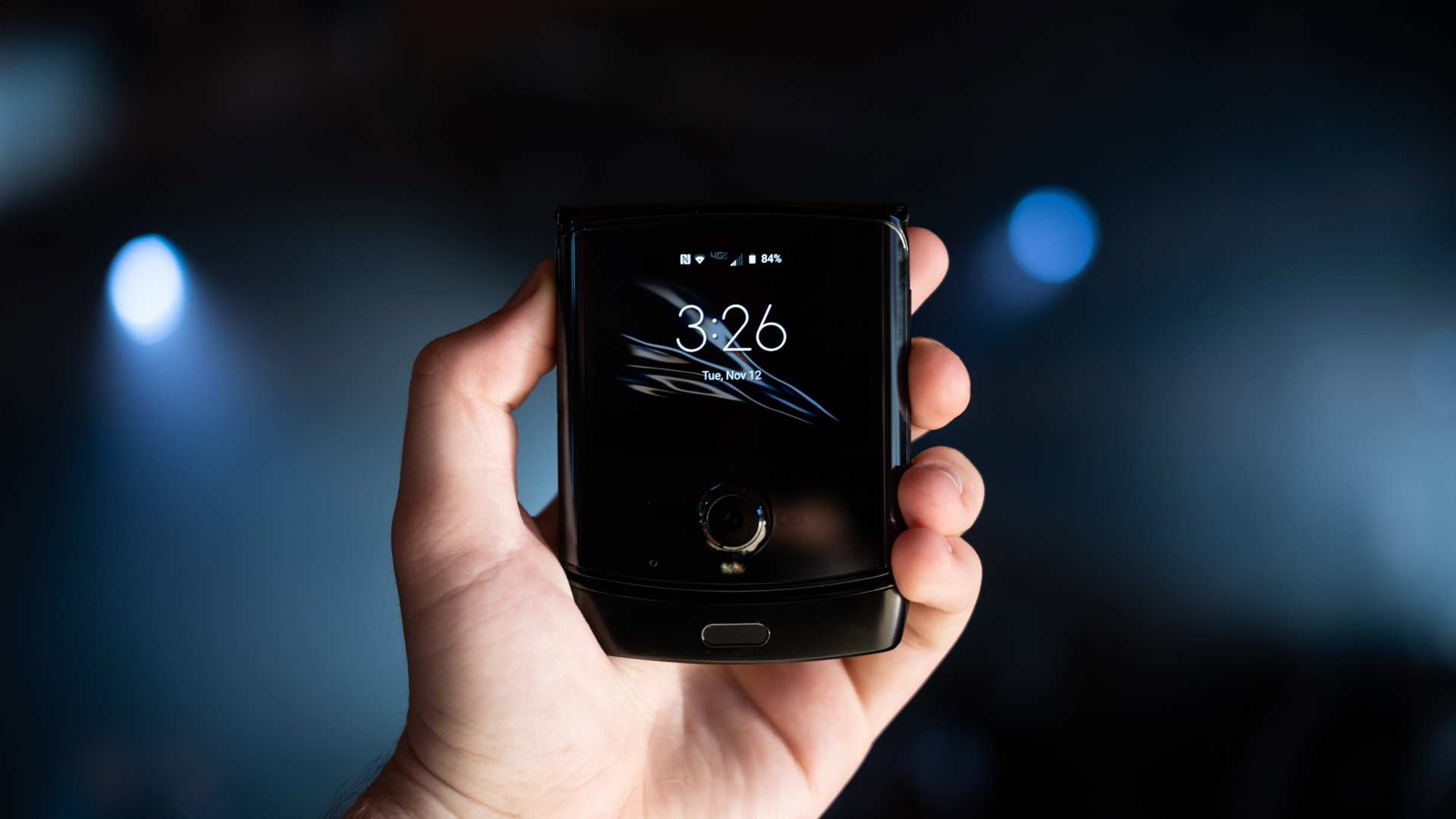
The Motorola Razr has a one-year warranty that comes with free replacement or repair of any issues. If the phone is out of warranty, you can get a new screen for $299.
Moto doesn’t think you’ll need to use that warranty though. It says it went to extra lengths to protect the screen by adding a special coating that makes it splash-proof and more resistant to scratching than most plastic OLED displays. We’ll have to test these claims when we get our review unit.
Don’t miss: The best Motorola phones you can buy
If you want to get a Razr for yourself, pre-orders start next month in December, and the phone will actually go on sale in January of 2020. More pricing and availability information can be found here.
What do you think of the new Razr? Is this practical or just playing on nostalgia. Is the price too steep for what Motorola is offering?